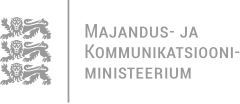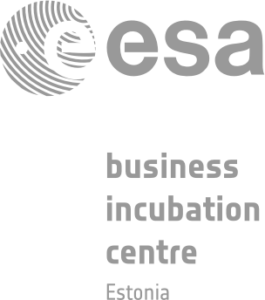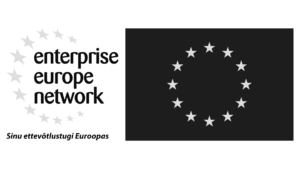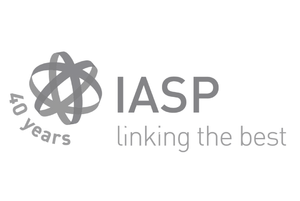25.08.2025
Jaanika Merilo: “You try, you fail, you improve, you pivot”

On 22 September, Tallinn will host Defence Innovation Day, bringing together leaders from defence, technology, and investment across the NATO alliance and beyond. For panel moderator Jaanika Merilo, this is more than just a discussion, it is a chance to bring lessons from Ukraine’s battlefield directly into conversations shaping Europe’s security future.
If this event were taking place in Kyiv, Merilo says the focus would be very different. Rather than general discussions on deregulation, the agenda could feature sessions on “how to mass-produce now that we have many MVPs (minimum viable products),” “how to award and purchase missions and results, not hardware,” “combat AI and autonomy” or “battlefield data fusion.” In other words: less about frameworks and more about achieving results on the battlefield.
This sharper focus comes from necessity. Europe remains highly regulated, which makes rapid innovation difficult when urgent needs collide with layers of directives. In Ukraine, a drone development cycle can be as short as 24 hours. Development teams are located close to the front line, receiving real-time data from drones. Adjustments are made on the spot, and the upgraded drone is back in operation within days. “No one asks whether it complies with the AI Act or other peacetime regulations, the only question is whether it will save lives.”
The same urgency has also transformed how success is measured and how innovation is procured. In Ukraine, it is not about counting drones delivered; success might be measured by missions accomplished or targets hit and destroyed. Instead of lump-sum financing, performance-based bonuses can be tied directly to battlefield results. This creates immediate incentives, but in many Western systems such an approach is still seen as going too far.
Innovation should play a much bigger role in defence education
Drawing on her Master’s studies in Defence, Espionage and Surveillance at King’s College London, Merilo argues that innovation should play a much bigger role in defence education. The war in Ukraine has shown the value of linking academia, the military, and innovative companies not only through research, but also through joint projects, rapid prototyping, and real-world testing. She highlights the need for regulatory sandboxes and testing environments to prepare defence leaders to work seamlessly with start-ups, tech firms, and cross-disciplinary teams.
This emphasis on agility is already visible in Estonia. From autumn 2025, she will teach in the new Master’s programme in Open-Source Intelligence (OSINT) at the Estonian Academy of Security Sciences, a forward-looking addition designed to keep curricula relevant and innovation-driven.
When helping start-ups pivot from civilian to defence applications without bureaucratic roadblocks, Merilo identifies four priorities:
- First, adopt procurement models that prioritise innovation over stockpiling, buying capabilities as needed rather than hardware that may become obsolete in storage.
- Second, expand advanced testbeds and polygons in Estonia to eliminate slow, costly trips to Ukraine for critical testing.
- Third, maintain close cooperation with the Estonian Defence Forces and fully leverage Ukraine as a testing ground.
- Fourth, develop regulatory sandboxes, a step already being pursued by the Ministry of Defence and Ministry of Economic Affairs.
In July 2025, Ukraine’s Ministry of Defence launched K4 Startup Studio, an accelerator focused on building and testing highly impactful AI start-ups and military technology. Companies are offered grants of up to $250,000 in combination with rapid battlefield testing and a direct path to procurement. In Ukraine, this initiative is backed by Germany’s Defence Ministry. Merilo believes such a model would be highly beneficial to Estonia.
Estonia, she notes, already has many of the necessary ingredients: NATO DIANA, CR14’s cyber expertise, a strong UAV (unmanned aerial vehicle) sector, a fast-moving start-up culture, and a legislature ready to create sandboxes. A national studio could start with state funding matched by private capital and EU/NATO programmes, with clear demand set by the Ministry of Defence and the Defence League. MVPs could be tested both in Estonian sandboxes and on the battlefield in Ukraine, with performance-based follow-on funding.
This readiness to test and iterate connects to her view on the term “dual-use.” While a drone could serve both defence and civilian purposes, the required features, engineering, and marketing are entirely different. Larger firms may manage both, but for start-ups, splitting focus can weaken the product. Some civilian solutions can be adapted for defence, but this requires state funding to support piloting, failure, and MVP creation. As she says: “try fast, fail fast.” In Ukraine, failure is often encouraged as part of the iterative process needed to stay ahead on a constantly shifting battlefield.
Speed though does not equal instant scaling. An MVP can be developed quickly, but mass production needs production lines, supply chains, and quality assurance. Partnering with Ukrainian companies adds value. Estonian firms can handle production, quality control, European market access, and engineering, while Ukrainian partners focus on frontline development and feedback.
Even with a strong product, sales are not guaranteed. Ukraine often prioritises its own defence firms and may already have similar solutions. Government procurement is slower than B2B (business-to-business) or B2S (business-to-state), and political sensitivities narrow the pool of suitable investors. Defence needs backers ready for unpredictable, politically charged markets.
Still, the climate is shifting as more funds are lifting restrictions and exploring defence tech. For now, investor demand exceeds company supply.
This makes it an opportune time for Estonia to strengthen its appeal to foreign defence and dual-use entrepreneurs. “It is sad that this advantage is due to war, but Ukraine welcomes innovative companies to test there, and Estonia can be a strong bridge.”
Estonia’s first defence unicorns
Looking ahead, Merilo names two Estonian companies tackling critical challenges with the potential of becoming our first defence unicorns: Frankenburg Technologies, which is developing low-cost interceptors to counter cheap but effective Shahed* drones, and KrattWorks, which is producing EW (electronic warfare)-resilient reconnaissance and strike drones capable of swarming.
Her message for Defence Innovation Day is clear: Estonia has much to learn from Ukraine’s speed, adaptability, and focus on results. By shortening feedback loops, investing in real-world testing, and aligning procurement with performance, NATO countries can turn innovative ideas into battlefield-ready capabilities far more quickly.
Join us in Tallinn on 22 September ofor a Defence Innovation Day to hear Jaanika Merilo and other leading voices in defence innovation.
Defence Innovation Day is brought to you by Tehnopol and the Ministry of Economic Affairs and Communications through the NATO DIANA Estonian Accelerator. One session is co-curated by Sparkup Tartu Science Park.
* Shahed drones are Iran‑designed loitering munitions, kamikaze-style drones used by Russia in Ukraine.
** Photo: sTARTUp Day

















